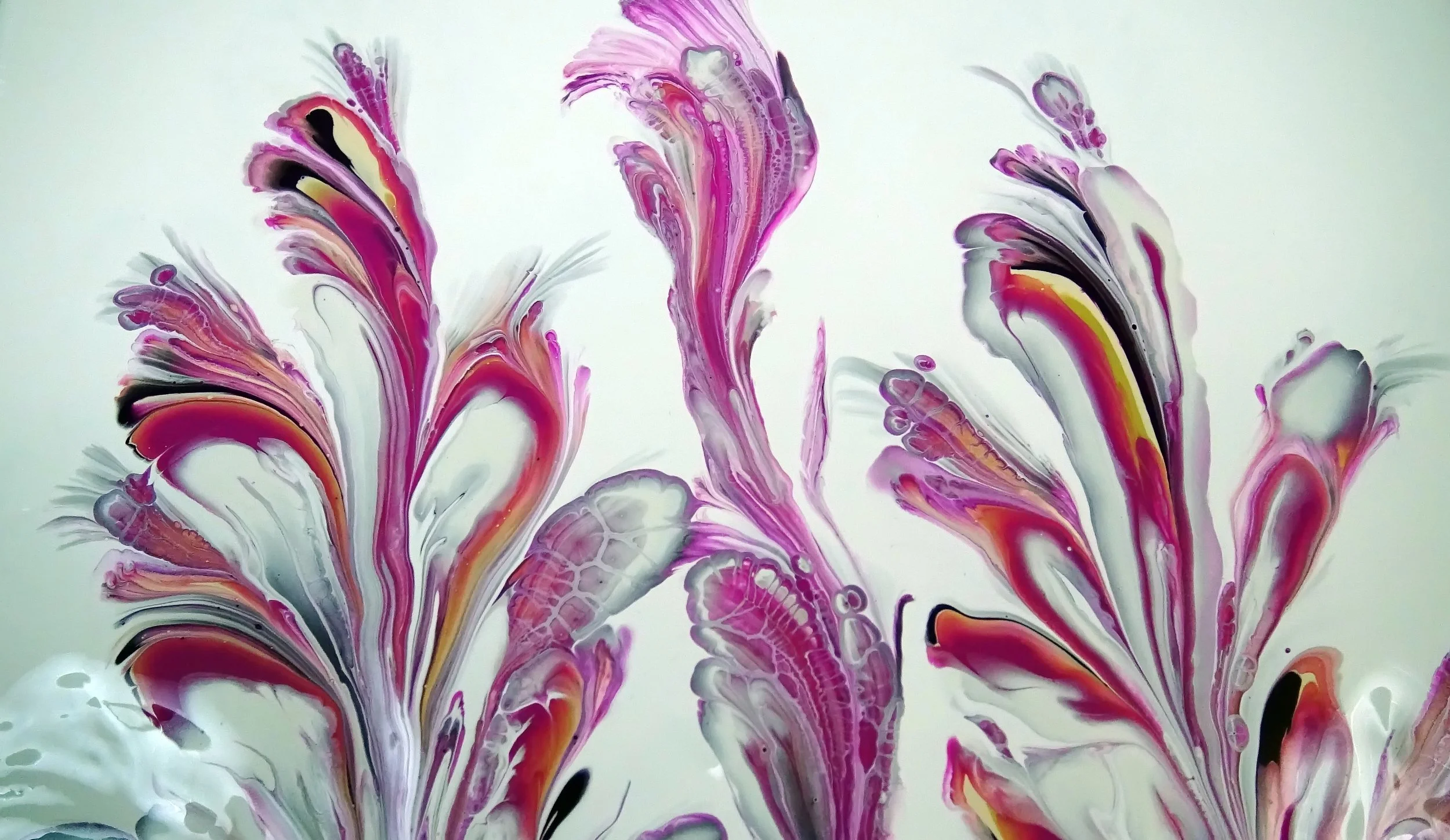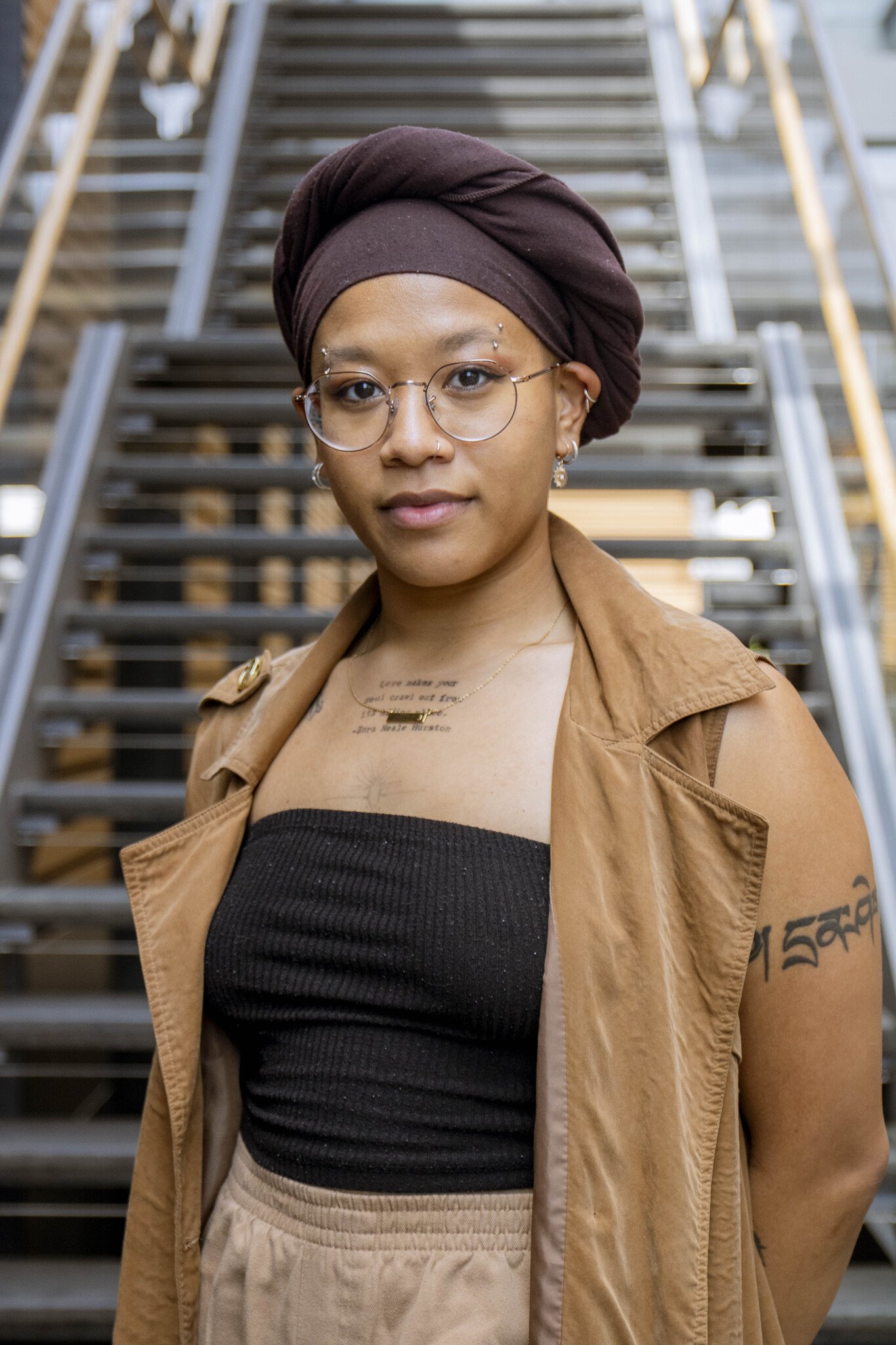The sacred ritual of trust
The Space Between Us
by Maij Vu Mai
“...ritual is, above all else, the yardstick by which people measure their state of connection with the hidden ancestral realm, with which the entire community is genetically connected…The abandonment of ritual can be devastating…Where ritual is absent, the young ones are restless or violent, there are no real elders, and the grown-ups are bewildered. The future is dim.
- Malidoma Somé, Ritual: Power, Healing, and Community
What is religious pluralism to the Survivor?
To the one who’s lost faith in themselves? Lost faith in other people? Lost faith in humanity? To the one who’s lost faith in their ability to connect because trauma severed them from the most intimate and vulnerable parts of themselves?
Zine art from “Sublime Divinations,” an Queer AAPI Zine from the Center for LGBTQ and Gender Studies in Religion. Art created by Maij Vu Mai. Quote by Quynh Vu.
I’ve been exploring this question for the past 27 years of my life as a survivor of intentional and unintentional conversion therapy at the hands of religious practitioners who truly believed that they were conducting a sacred ritual and “saving” my life when they uttered the phrase “Love the sinner, hate the sin” to me over and over again. It was a spell that held me in a spiritual chokehold for most of my life, sneaking into my subconscious like fervent whispers in the night as I knelt by my bedside table in prayer, agonizing over the gay thoughts floating through my mind. Praying the gay away had become my nightly ritual – a poisonous toxin infiltrating my every breath, slowly killing me from the inside out every time I looked at the crucifix hanging precariously off of the cerulean blue rosary my grandmother gifted me.
As I grew older, left my hometown, and made my way through undergrad, I gradually created new rituals that would sustain the aching soul that sat like a heavy anchor in the center of my chest. “No Justice, No Peace!” became my new, desperate prayer. I became a staunch atheist, abandoning all relationships with God, religions, and faith, because it felt like God was never really there for me in my darkest hour. Organizing with comrades in the middle of the night, writing demands for safer sanctuaries where we could live and breathe more freely became a new ritual for me. My first queer relationship was a catalyst that transformed the way I worshiped the altar of my queer trans nonbinary life.
Fast forward a couple of years later and I surprised myself when I decided to apply to divinity school, determined to answer the one question that continued to haunt me like a dreary specter in the deepest parts of my subconscious: Does God really hate me as much as they said he did? Long story short, the answer was yes – and no. After 3 years of intentional study and research, I concluded that God could be a white supremacist just as much as God could be a liberated Black & Asian Trans Nonbinary spirit. God could be whatever you imagined God to be because God was an embodied projection of how you decided to love and worship yourself and others at any given moment and time in your life.
In the summer of 2020, I lived into my newly transmuted faith role as an on-the-ground protest chaplain, helping others recover their breath and sanity in the midst of tear gas and rubber bullets. I participated in a 49-day occupation of a park in my college town, setting up and taking down heavy camp tents every morning and evening in response to the murder of a Black man in the city’s local jail (#SayHisName #JusticeforJohnNeville). I facilitated daily healing rituals and restorative practices for a small collective of community organizers who found Spirit in the arms of beloved community when everyone else in the city seemed to be against us. I did this until August of 2022 when my body finally broke down into a million pieces, devastated by the very real and harsh impact of living in a pandemic as a community minister that wasn’t taking care of themselves.
Reaching my mental, emotional, physical, and spiritual breaking point ushered in a flood of suicidal thoughts. My therapist calls it PTSD. My pastor called it spiritual death. I wanted to unalive myself because I couldn’t bear to hold and be present to another broken spirit, especially my own. It was like losing God and faith all over again. I felt like the new rituals that I had created for myself were collapsing around me like the walls of a crumbling fortress that I had erected to protect the softest parts of me – the same parts of me that prayed for salvation all those years ago next to my bedside table, cerulean blue rosary in one hand, my broken heart in the other. I believed that being crushed by the rubble of the world would offer me the ultimate relief, relief from the anguished cries of those who called on me for support when I didn’t even have any to give to myself.
Thank God for Black Queer and Trans people. Thank God for disability justice organizers like Leah Lakshmi Piepzna-Samarasinha and Jade T. Perry. Thank God for artists, for the Nap Ministry. “Rest as Resistance” (Tricia Hershey, The Nap Ministry) now became my ritual, my new prayer of sustenance at a time where my spiritual well had run completely dry. I don’t think I would’ve made it through that summer if it wasn’t for the infinite possibilities that those movements offered me, when I believed that making a martyr out of myself for freedom was my only possibility.
“We need ritual because it is an expression of the fact that we recognize the difficulty of creating a different and special kind of community. A community that doesn’t have ritual cannot exist…What we need is to be able to come together with a constantly increasing mindset of wanting to do the right thing, even though we know very well that we don’t know how nor where to start…Knowing what spirit to invoke and what to do with that spirit depends on your ability to stay focused on your purpose. You must be willing to speak of your inabilities, your clumsiness.”
- Malidoma Somé, Ritual: Power, Healing, and Community
What is religious pluralism to the Survivor?
It is being committed to your survival, by any means necessary, with the tools and knowledge and skill sets that you hold at any given moment. When I think of interfaith work, I don’t think about throwing together a hodgepodge of different religious traditions and practices into the same room, and slapping the label “interfaith service” over it. I don’t think about committing to memory every single religious holiday that cycles through the year and making sure I’m on my p’s and q’s with my shares on Facebook to showcase my interfaith knowledge and religious pluralist values (I have an ADHD memory – I can’t even remember to drink water when I need to).
Zine art from “Sublime Divinations,” an Queer AAPI Zine from the Center for LGBTQ and Gender Studies in Religion. Art created by Maij Vu Mai. Quote by Raja Gopal Bhattar.
Interfaith work looks like exploring and honoring the multidimensional spiritual universe within myself and holding curiosity about the universes within others.
It is asking the question: “What’s currently killing the faith that you have in yourself and others, and what sacred ritual can we create together to honor the Divinity in all of us?” In what ways are the violent systems holding us captive stealing us away from the sacred ritual of community care, the sacred ritual of living and breathing deeply as our most flourishing, abundant divine selves?
Again, what is religious pluralism to the Survivor? What role does ritual play for the Survivor in interfaith work?
Ritual is breath. Ritual is rest. Ritual is pleasure. Ritual is dancing in the rain and having faith that the Sun will come back out again to dry the tears of our grief and suffering. Ritual is remembering that the Moon stays in the sky, even when it’s covered by the clouds or transitioning into a new phase. Ritual isn’t simply the performance of a set routine repeatedly performed for the sake of routine It is a repeated set of patterns and behaviors designed to evoke Spirit. Ritual breathes sacred meaning back into my existence in a world where existence feels futile and meaningless.
“Our soul communicates things to us that the body translates as need, or want, or absence. So we enter into ritual in order to respond to the call of the soul.”
- Malidoma Somé, Ritual: Power, Healing, and Community
Ritual is the tether that brings us back to self and community when the tides of society pull us away from safe harbors and shores. Ritual is what strengthens ties between community, what keeps the spider’s web tethered to the branches of the tree, a consistent interlooping of intersections that strengthen the ties that bind one branch to another.
Zine art from “Sublime Divinations,” an Queer AAPI Zine from the Center for LGBTQ and Gender Studies in Religion. Art created by Maij Vu Mai. Quote by Tahil Sharma.
The prefix “inter” literally means “among” or “between.” “Faith” simply means “complete trust in someone or something” (Google). Thus, inter-faith simply refers to the space that exists “amongst” or “between” the trust we place in someone or something.
Ritual is the tie that maintains the trust we have in the space between us.
Whenever someone asks me what my faith tradition is, I tell them that I believe in the tradition of Maij. I believe in the tradition of me. I believe in me because it is the me within myself that has gotten me this far and I’m not about to lose trust in something that has never failed me. Am I perfect? Absolutely not. Faith doesn’t ask me to be perfect. It asks me to trust in every version of myself that I have needed to become in this world will need to become in the next.
Can I trust you to hold the space between you and me? Can you trust me? Can we trust each other? Can we trust the ritual that is us, becoming over and over again with every breath that enters and exits our bodies?
I’m not always sure, but I’m just gonna trust it. And for right now, that’s enough for me.
Header Photo: Unsplash





